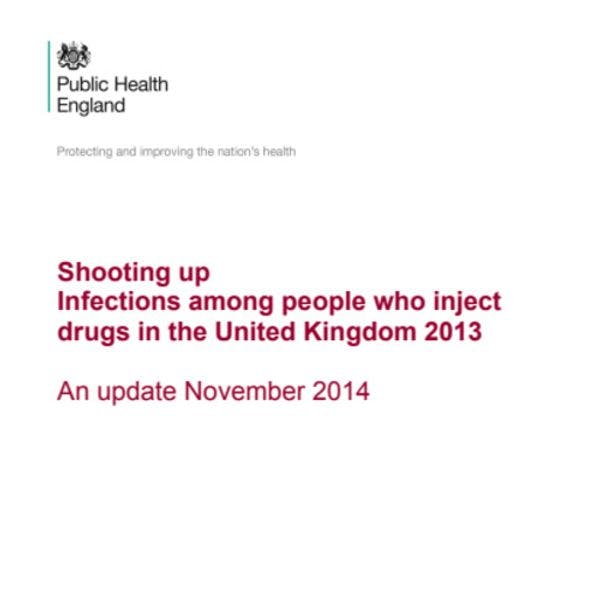Shooting up: Infections among people who inject drugs in the United Kingdom 2013
Hepatitis C levels are still high.
Among people who inject psychoactive drugs, such as heroin and mephedrone, around two in five are living with hepatitis C; half of these infections are undiagnosed. About one in 30 of those who inject image and performance enhancing drugs, such as anabolic steroids, are living with hepatitis C.
Hepatitis B is now rare and vaccine uptake has improved.
Hepatitis B infection among people who inject psychoactive drugs has declined in recent years, probably reflecting the marked increase in the uptake of the hepatitis B vaccine. However, vaccine uptake levels have been stable in recent years, even though they could be increased further. Vaccine uptake is much lower among people who inject image and performance enhancing drugs.
HIV levels remain low and the uptake of care is good.
Around one in every 100 people who inject drugs is living with HIV. The level of HIV infection among those injecting image and performance enhancing drugs is similar to that among those injecting psychoactive drugs, and the uptake of HIV related care, including anti-retroviral therapy, is high.
Bacterial infections remain a major problem.
A quarter of people who inject psychoactive drugs report a recent symptom of an injecting site bacterial infection. One in six of those injecting image and performance enhancing drugs report having had a symptom of an injecting site bacterial infection.
Injecting risk behaviours have declined but remain a problem.
Reported needle and syringe sharing has halved over the last 10 years, but around one in seven people injecting psychoactive drugs share needles and syringes and almost one in three had injected with a used needle that they had attempted to clean.
Changing patterns of psychoactive drug injection are a cause for concern.
There has been a recent increase in the injection of amphetamines and amphetamine-type drugs, such as mephedrone. The injection of these drugs has been associated with higher levels of infection risk. Although the injection of these drugs is much less common than the injection of opiates, crack-cocaine, or image and performance enhancing drugs, this increase is a concern.
Provision of effective interventions needs to be maintained.
The provision of effective interventions, such as needle and syringe programmes, opioid substitution treatment and other drug treatment, which act to reduce risk and prevent infections, needs to be maintained. These interventions need to be responsive to any changes in patterns of drug use. Vaccinations and diagnostic tests for infections should continue to be routinely offered to people who inject drugs and treatment made available to those testing positive.
Keep up-to-date with drug policy developments by subscribing to the IDPC Monthly Alert.
